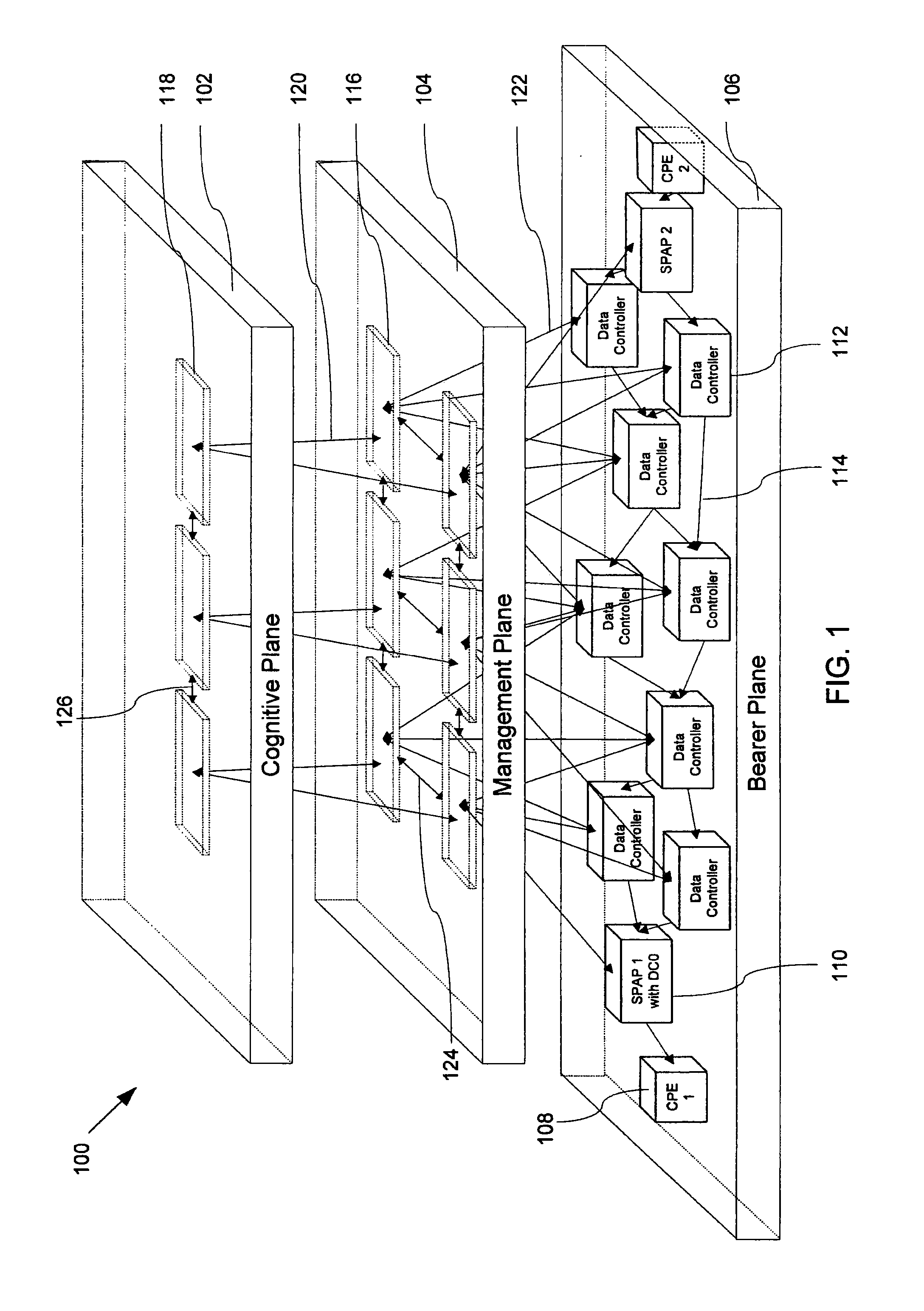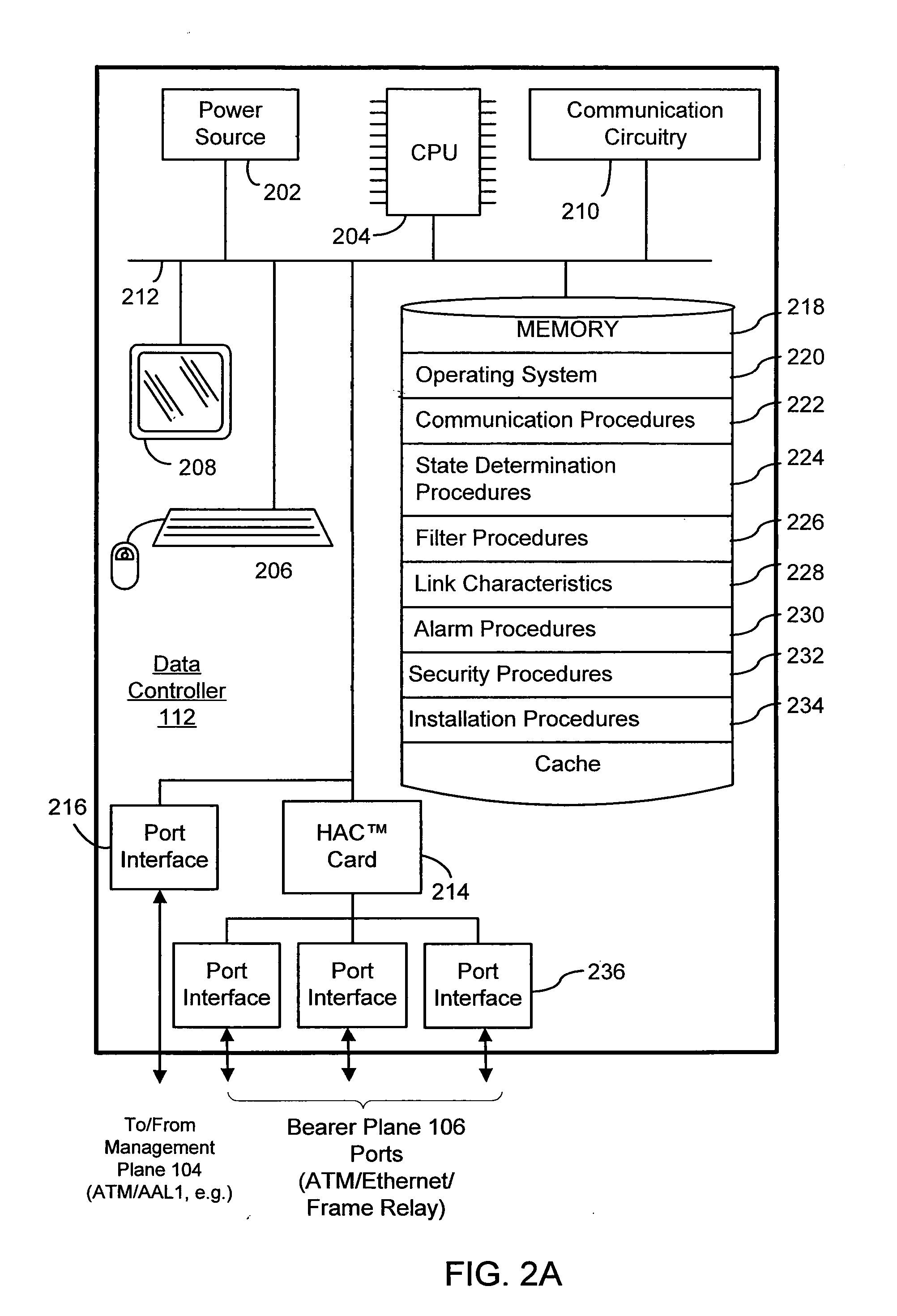Cognitive Network
a network and network technology, applied in the field of network computing, can solve the problems of inability to guarantee the quality of service of carriers, inability to work well for real-time or streaming transmissions such as voice or video conferencing, and inability to connect to the network, so as to reduce the overall network computational load, improve efficiency, and enhance security and deterministic performance.
- Summary
- Abstract
- Description
- Claims
- Application Information
AI Technical Summary
Benefits of technology
Problems solved by technology
Method used
Image
Examples
Embodiment Construction
[0031]FIG. 1 is schematic of a cognitive network 100, according to an embodiment of the invention. The cognitive network 100 is made up of three distinct functional layers or planes, namely a cognitive plane 102, a management plane 104, and an bearer plane 106. The bearer plane 106 is similar in many respects to current IP networks, such as the Internet. For example, customer premises equipment (CPE) 108 communicate with their respective Service Provider's Aggregation Point (SPAP) 110 via any suitable communication link, such as T1, Digital Subscriber Line (DSL), or cable connection. The CPE may include a DSL modem, cable modem, or Voice Over IP (VoIP) telephone, or the like. The SPAP includes or provides connectivity to at least the same components as the data controllers described below. Also, although not shown, existing IP network elements, such as IP routers and switches, are dispersed throughout the network, as is well understood by those skilled in the art. For example, each ...
PUM
 Login to View More
Login to View More Abstract
Description
Claims
Application Information
 Login to View More
Login to View More - R&D
- Intellectual Property
- Life Sciences
- Materials
- Tech Scout
- Unparalleled Data Quality
- Higher Quality Content
- 60% Fewer Hallucinations
Browse by: Latest US Patents, China's latest patents, Technical Efficacy Thesaurus, Application Domain, Technology Topic, Popular Technical Reports.
© 2025 PatSnap. All rights reserved.Legal|Privacy policy|Modern Slavery Act Transparency Statement|Sitemap|About US| Contact US: help@patsnap.com



